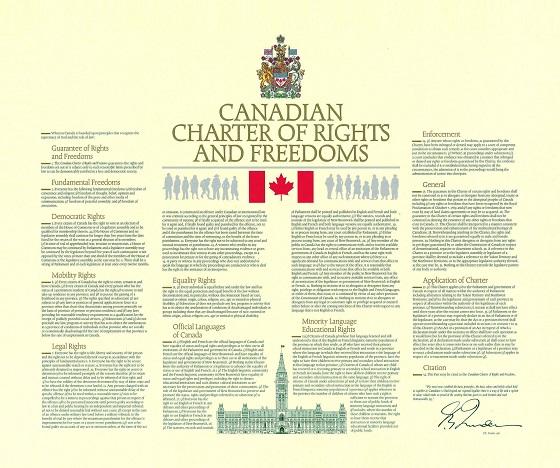Brownstone Institute
Don’t Believe Your Lying Eyes

From the Brownstone Institute
BY
If you have not yet read the book 1984 by George Orwell, you absolutely must.
I loathed that novel when I read it as a teen, because I hated the entire idea of an authoritarian government controlling its people so deftly. The dystopian world it described was just so depressing, so wrong, from the first page to the last. And yet, here we are, almost 75 years after Orwell first penned the book, and we see how that hellish science fiction novel is now playing out before us.
Even the left-leaning Wikipedia describes the book as a “cautionary tale” whose theme centers on “the consequences of totalitarianism, mass surveillance and repressive regimentation of people and behaviors within society.” Modeled on the authoritarian states of Stalin’s Soviet Union and of Nazi Germany, the book takes a deep dive into the role of truth within a society, and the ways in which truth and facts can be manipulated by government to control the population.
What you saw and heard with your own eyes and your own ears, the government denied and demanded you cast it aside and not believe it.
“The Party told you to reject the evidence of your eyes and ears. It was their final, most essential command.”
― George Orwell, 1984
Through the Ministry of Truth, the government (referred to in the book as “Big Brother” or “the Party”) engages in endless propaganda, intense surveillance, and the open and obvious negating of historical fact. Individual thought, and questioning of authority led to immediate persecution. Why deny facts and rewrite history? Well, as Orwell says in the book,
“Who controls the past controls the future. Who controls the present controls the past.”
― George Orwell, 1984
Now let’s fast-forward to the present day. I will begin with this profound statement that keeps churning over in my head:
They must really think we are stupid!
The “they” is our government (federal and state). The “we” is you and me, and the other 300+ million Americans across our country.
Alas, here we are, entering the final quarter of 2023, and we have the United States government, and many state governments (including New York’s former Governor Andrew Cuomo, current left-wing Governor Kathy Hochul, and the super-majority Dem legislature) proclaiming for all to hear that they did not force anyone to do anything detrimental these past 3.5 years. UNBELIEVABLE! Did you hear this? They are actually saying with straight faces that they didn’t force you to wear a mask, or lock down and shutter your businesses, or choose between taking an experimental drug or losing your job… Nope! They did none of that. And you – well, you are flat out crazy if you think they did. You are lying. You are exaggerating and totally overreacting.
Unfortunately for Big Brother, ooops, I mean unfortunately for our 100 percent reliable, never-lies-to-us government, we have actual documents (including lawsuits), news stories, social media posts, and videos of the government at all levels mandating and forcing us to do all of those things, and more. Here’s just one example of Biden himself, the “Big Guy,” mandating the C19 shot:
Biden is not alone. No, no. His entire administration is right there with him. His head of OSHA, Douglas Parker, is also now lying through his teeth about the OSHA mandate that REQUIRED (not suggested) that all employers in the entire nation with 100 or more employees force their employees to get the C19 shot, otherwise they had to wear a mask and test constantly for C19. (That OSHA mandate was struck down by SCOTUS last year because it was unconstitutional, by the way). Then there’s the head of HHS, Xavier Becerra, saying there was never a mask mandate. What?! Another blatant lie.
Please take the 2 minutes to watch this Congressman Kevin Kiley clip. You truly won’t believe your ears with the bullsh#* these Biden agency heads are spewing! As Congressman Kiley says in the video, the government is trying to tell us that “2 + 2 doesn’t equal 4.” You don’t get much more Orwellian than that!

Why are they backtracking now?
Easy answers: 1) they didn’t have the authority to do any of it (all of it was unconstitutional) so they can’t justify and defend it now, and 2) if they can convince you they didn’t do it before, then you won’t mind as much when they do it again.
This should make your blood boil. It’s particularly infuriating to those of us who were speaking out from basically day one trying to tell people that the lockdowns, the masking, the shots, the limited number of people at your wedding or at your Thanksgiving table were all violations of the Constitution and our basic human rights! My colleague, Jeffrey Tucker, who is the founder and President of Brownstone Institute, where I am a Fellow, wrote an article the other day on this topic. At the end of it, he concluded:
The major media is tacitly conspiring with the political establishment, the corporate sector, and the administrative state to pretend like that fiasco was completely normal and also entirely forgettable, not even worth naming. We did the best we could with the information we had so just stop complaining about it!
This is not going to work. It is too close to living memory for this level of gaslighting to be effective. The more these official institutions engage in this crazy form of denialism, the more they discredit themselves.
Republished from the author’s Substack
Brownstone Institute
Bizarre Decisions about Nicotine Pouches Lead to the Wrong Products on Shelves

From the Brownstone Institute
A walk through a dozen convenience stores in Montgomery County, Pennsylvania, says a lot about how US nicotine policy actually works. Only about one in eight nicotine-pouch products for sale is legal. The rest are unauthorized—but they’re not all the same. Some are brightly branded, with uncertain ingredients, not approved by any Western regulator, and clearly aimed at impulse buyers. Others—like Sweden’s NOAT—are the opposite: muted, well-made, adult-oriented, and already approved for sale in Europe.
Yet in the United States, NOAT has been told to stop selling. In September 2025, the Food and Drug Administration (FDA) issued the company a warning letter for offering nicotine pouches without marketing authorization. That might make sense if the products were dangerous, but they appear to be among the safest on the market: mild flavors, low nicotine levels, and recyclable paper packaging. In Europe, regulators consider them acceptable. In America, they’re banned. The decision looks, at best, strange—and possibly arbitrary.
What the Market Shows
My October 2025 audit was straightforward. I visited twelve stores and recorded every distinct pouch product visible for sale at the counter. If the item matched one of the twenty ZYN products that the FDA authorized in January, it was counted as legal. Everything else was counted as illegal.
Two of the stores told me they had recently received FDA letters and had already removed most illegal stock. The other ten stores were still dominated by unauthorized products—more than 93 percent of what was on display. Across all twelve locations, about 12 percent of products were legal ZYN, and about 88 percent were not.
The illegal share wasn’t uniform. Many of the unauthorized products were clearly high-nicotine imports with flashy names like Loop, Velo, and Zimo. These products may be fine, but some are probably high in contaminants, and a few often with very high nicotine levels. Others were subdued, plainly meant for adult users. NOAT was a good example of that second group: simple packaging, oat-based filler, restrained flavoring, and branding that makes no effort to look “cool.” It’s the kind of product any regulator serious about harm reduction would welcome.
Enforcement Works
To the FDA’s credit, enforcement does make a difference. The two stores that received official letters quickly pulled their illegal stock. That mirrors the agency’s broader efforts this year: new import alerts to detain unauthorized tobacco products at the border (see also Import Alert 98-06), and hundreds of warning letters to retailers, importers, and distributors.
But effective enforcement can’t solve a supply problem. The list of legal nicotine-pouch products is still extremely short—only a narrow range of ZYN items. Adults who want more variety, or stores that want to meet that demand, inevitably turn to gray-market suppliers. The more limited the legal catalog, the more the illegal market thrives.
Why the NOAT Decision Appears Bizarre
The FDA’s own actions make the situation hard to explain. In January 2025, it authorized twenty ZYN products after finding that they contained far fewer harmful chemicals than cigarettes and could help adult smokers switch. That was progress. But nine months later, the FDA has approved nothing else—while sending a warning letter to NOAT, arguably the least youth-oriented pouch line in the world.
The outcome is bad for legal sellers and public health. ZYN is legal; a handful of clearly risky, high-nicotine imports continue to circulate; and a mild, adult-market brand that meets European safety and labeling rules is banned. Officially, NOAT’s problem is procedural—it lacks a marketing order. But in practical terms, the FDA is punishing the very design choices it claims to value: simplicity, low appeal to minors, and clean ingredients.
This approach also ignores the differences in actual risk. Studies consistently show that nicotine pouches have far fewer toxins than cigarettes and far less variability than many vapes. The biggest pouch concerns are uneven nicotine levels and occasional traces of tobacco-specific nitrosamines, depending on manufacturing quality. The serious contamination issues—heavy metals and inconsistent dosage—belong mostly to disposable vapes, particularly the flood of unregulated imports from China. Treating all “unauthorized” products as equally bad blurs those distinctions and undermines proportional enforcement.
A Better Balance: Enforce Upstream, Widen the Legal Path
My small Montgomery County survey suggests a simple formula for improvement.
First, keep enforcement targeted and focused on suppliers, not just clerks. Warning letters clearly change behavior at the store level, but the biggest impact will come from auditing distributors and importers, and stopping bad shipments before they reach retail shelves.
Second, make compliance easy. A single-page list of authorized nicotine-pouch products—currently the twenty approved ZYN items—should be posted in every store and attached to distributor invoices. Point-of-sale systems can block barcodes for anything not on the list, and retailers could affirm, once a year, that they stock only approved items.
Third, widen the legal lane. The FDA launched a pilot program in September 2025 to speed review of new pouch applications. That program should spell out exactly what evidence is needed—chemical data, toxicology, nicotine release rates, and behavioral studies—and make timely decisions. If products like NOAT meet those standards, they should be authorized quickly. Legal competition among adult-oriented brands will crowd out the sketchy imports far faster than enforcement alone.
The Bottom Line
Enforcement matters, and the data show it works—where it happens. But the legal market is too narrow to protect consumers or encourage innovation. The current regime leaves a few ZYN products as lonely legal islands in a sea of gray-market pouches that range from sensible to reckless.
The FDA’s treatment of NOAT stands out as a case study in inconsistency: a quiet, adult-focused brand approved in Europe yet effectively banned in the US, while flashier and riskier options continue to slip through. That’s not a public-health victory; it’s a missed opportunity.
If the goal is to help adult smokers move to lower-risk products while keeping youth use low, the path forward is clear: enforce smartly, make compliance easy, and give good products a fair shot. Right now, we’re doing the first part well—but failing at the second and third. It’s time to fix that.
Addictions
The War on Commonsense Nicotine Regulation

From the Brownstone Institute
Cigarettes kill nearly half a million Americans each year. Everyone knows it, including the Food and Drug Administration. Yet while the most lethal nicotine product remains on sale in every gas station, the FDA continues to block or delay far safer alternatives.
Nicotine pouches—small, smokeless packets tucked under the lip—deliver nicotine without burning tobacco. They eliminate the tar, carbon monoxide, and carcinogens that make cigarettes so deadly. The logic of harm reduction couldn’t be clearer: if smokers can get nicotine without smoke, millions of lives could be saved.
Sweden has already proven the point. Through widespread use of snus and nicotine pouches, the country has cut daily smoking to about 5 percent, the lowest rate in Europe. Lung-cancer deaths are less than half the continental average. This “Swedish Experience” shows that when adults are given safer options, they switch voluntarily—no prohibition required.
In the United States, however, the FDA’s tobacco division has turned this logic on its head. Since Congress gave it sweeping authority in 2009, the agency has demanded that every new product undergo a Premarket Tobacco Product Application, or PMTA, proving it is “appropriate for the protection of public health.” That sounds reasonable until you see how the process works.
Manufacturers must spend millions on speculative modeling about how their products might affect every segment of society—smokers, nonsmokers, youth, and future generations—before they can even reach the market. Unsurprisingly, almost all PMTAs have been denied or shelved. Reduced-risk products sit in limbo while Marlboros and Newports remain untouched.
Only this January did the agency relent slightly, authorizing 20 ZYN nicotine-pouch products made by Swedish Match, now owned by Philip Morris. The FDA admitted the obvious: “The data show that these specific products are appropriate for the protection of public health.” The toxic-chemical levels were far lower than in cigarettes, and adult smokers were more likely to switch than teens were to start.
The decision should have been a turning point. Instead, it exposed the double standard. Other pouch makers—especially smaller firms from Sweden and the US, such as NOAT—remain locked out of the legal market even when their products meet the same technical standards.
The FDA’s inaction has created a black market dominated by unregulated imports, many from China. According to my own research, roughly 85 percent of pouches now sold in convenience stores are technically illegal.
The agency claims that this heavy-handed approach protects kids. But youth pouch use in the US remains very low—about 1.5 percent of high-school students according to the latest National Youth Tobacco Survey—while nearly 30 million American adults still smoke. Denying safer products to millions of addicted adults because a tiny fraction of teens might experiment is the opposite of public-health logic.
There’s a better path. The FDA should base its decisions on science, not fear. If a product dramatically reduces exposure to harmful chemicals, meets strict packaging and marketing standards, and enforces Tobacco 21 age verification, it should be allowed on the market. Population-level effects can be monitored afterward through real-world data on switching and youth use. That’s how drug and vaccine regulation already works.
Sweden’s evidence shows the results of a pragmatic approach: a near-smoke-free society achieved through consumer choice, not coercion. The FDA’s own approval of ZYN proves that such products can meet its legal standard for protecting public health. The next step is consistency—apply the same rules to everyone.
Combustion, not nicotine, is the killer. Until the FDA acts on that simple truth, it will keep protecting the cigarette industry it was supposed to regulate.
-

 armed forces10 hours ago
armed forces10 hours agoIt’s time for Canada to remember, the heroes of Kapyong
-

 International2 days ago
International2 days agoBBC uses ‘neutrality’ excuse to rebuke newscaster who objected to gender ideology
-

 Agriculture2 days ago
Agriculture2 days agoThe Canadian Food Inspection Agency’s Bloodlust for Ostriches: Part 2
-

 Housing2 days ago
Housing2 days agoTrump advancing 50-year mortgage to help more Americans buy homes
-

 Agriculture2 days ago
Agriculture2 days agoWas The Ostrich “Cull” A Criminal Act?
-

 International2 days ago
International2 days agoBBC boss quits amid scandal over edited Trump footage
-

 Frontier Centre for Public Policy2 days ago
Frontier Centre for Public Policy2 days agoNotwithstanding Clause Is Democracy’s Last Line Of Defence
-

 Daily Caller2 days ago
Daily Caller2 days agoMcKinsey outlook for 2025 sharply adjusts prior projections, predicting fossil fuels will dominate well after 2050











